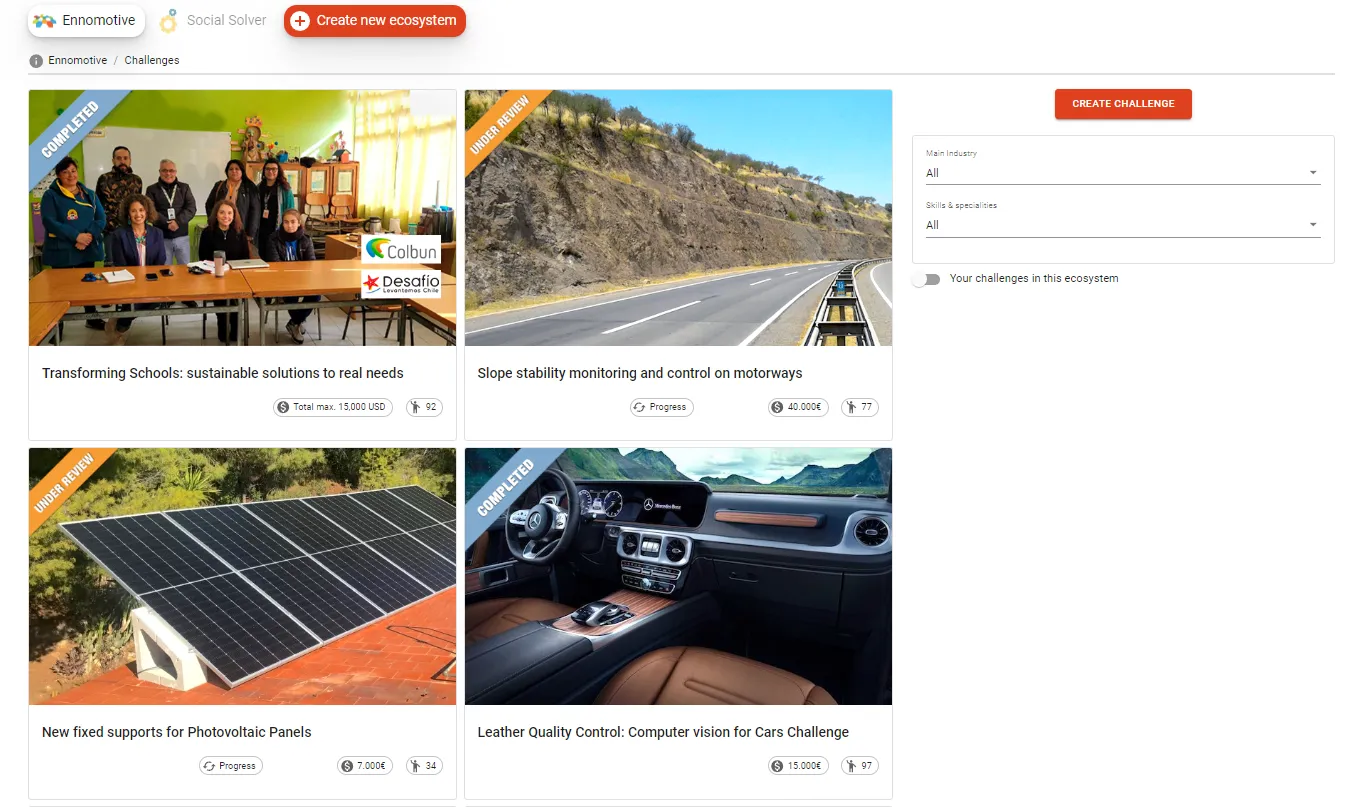Background
This company, leader in raw materials extraction, storage and production of derivatives, is seeking to improve the working environment and conditions, both in mining sites, the open and closed storage areas, and the factories.
The challenge
This company is constantly trying ways to reduce the amount of dust in both open and closed areas in industrial environments. However it is necessary to acquire the right devices in order to carry out a thorough study of the environmental impact.
Dust measurements are made both 1.40m high from the ground, or over 4m high, from buildings and warehouses’ ceilings, from conveyor belts, storage facilities or far-off areas.
There are different types of diffuse emissions in the factories, the occasional or permanent effect of the wind and dust clouds at a certain height. The sensors must be able to obtain a diffuse measurement in this environment.
The existing technology only works with clean air (commercial equipment used in cities) and the characteristics of this kind of measuring equipment hinders its implementation in industrial environments because it needs daily maintenance, it may not resist the environmental conditions, and its set up is not very flexible.
The measuring devices must continuously record the suspended particulate matter and create potential alerts, transfer data to the central system and create measuring networks to apply said data both in closed and open areas.
The particulate matter can be classified according to these parameters: TSP, PM10, PM2.5 and PM1. The possibility to monitor one or all this cuts simultaneously is required for this measuring device.
What the client is looking for
The client is looking for IoT-based solutions to detect dust concentration, to be used in both mining sites and factories. The solution must be designed to detect the level of suspended dust within a broad perimeter from the location of the measuring device.
The solution must be able to measure the following:
- Continuous measurements of 50mg/m3
- At least 500 microg/m3
- Peaks up to 200mg/m3
- At least TSP (total suspended particles) and PM10
- PM2,5 and PM1 if possible. It will be positively evaluated.
- Organic gases like BTX (BencenoToluenoXileno) if possible (it is a “nice to have”) with a response accuracy validated by certified measurement systems.
Because of the environment, the devices will require little maintenance, every month or every 3 months, and a flexible set up.
The solution can be installed in existing supports or provide new ones where there are not any. It will be positively evaluated if it can be adapted to mobile devices such as drones to make measurements at a certain height.
Once this challenge is successfully completed and the winning solution is awarded, a new prototype and tests phase will be executed.
The solution must take the following key requirements into account:
1 Sensors to detect dust concentration in the location depending on several variables or a combination of them. This detection technology must be selected by the solver and justified accordingly.
2 Justification of the planned maintenance periods, mainly as a result of dust accumulation, to act accordingly within the necessary measurement range.
3 Maximum life cycle, with an energy operation system completely autonomous.
4 Inclusion of the transceiver element to connect to the selected network.
5 The device may have the intelligence necessary to create alerts while minimizing the probability of false alarms.
6 Ready to be easily installed outdoors and protected against rain and sunlight for the entire lifespan of the device.
Evaluation Criteria
The solutions will be evaluated according to the following criteria:
- Technical solution: considered parameters, feasibility and efficiency evidence, compliance with all the requirements, testing plan for the solutions, adaptability to different weather and environment conditions.
- The lowest possible maintenance.
- Plug & play installation.
- The longest operating life.
- The lowest estimated cost to build the solution.
This is a 3-rounds tournament with the following submissions:
First round
- Brief description/sketch of the proposed design.
- Justification of the solution: how your proposal will detect dust, minimize maintenance and false alarms, connect to the network and maximize the life cycle.
- Feasibility evidence of the solution.
- Estimated cost of the solution.
Second round
- Detailed designed of the solution: 2D sketches, technical characteristics.
- Evidence that the solution works: detailed calculations, false alarm prevention, life cycle estimation, network connection… )
- Building cost.
- Detailed testing plan.
Third round
- Clarifications
Tournament Structure and Timing
This is a 3 round tournament with the following timings
1st round – 6 weeks+ 2 week for evaluation
2nd round – 4 weeks + 2 week for evaluation
3rd round – 2 weeks + 1 week for evaluation



